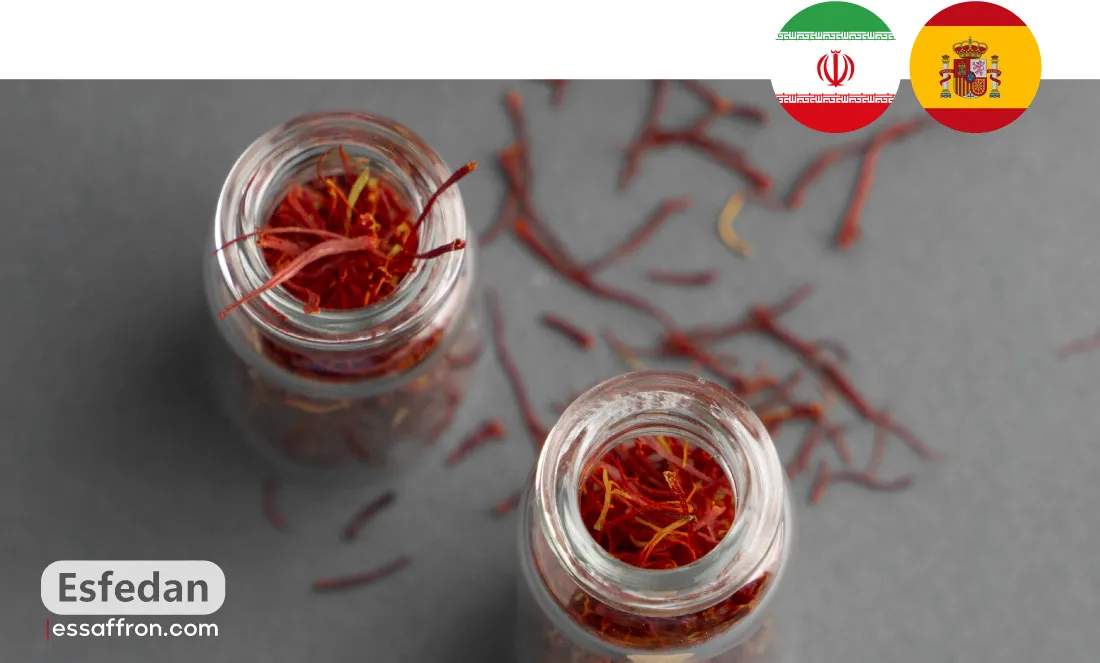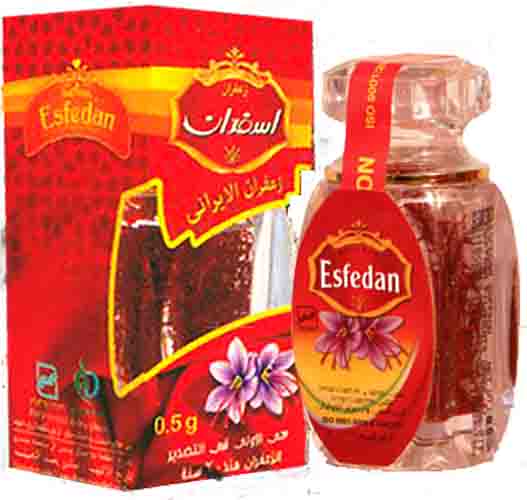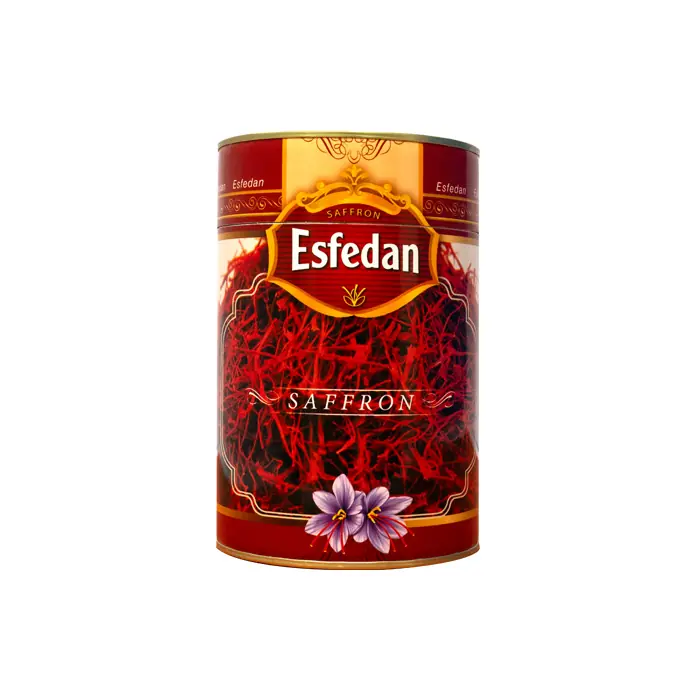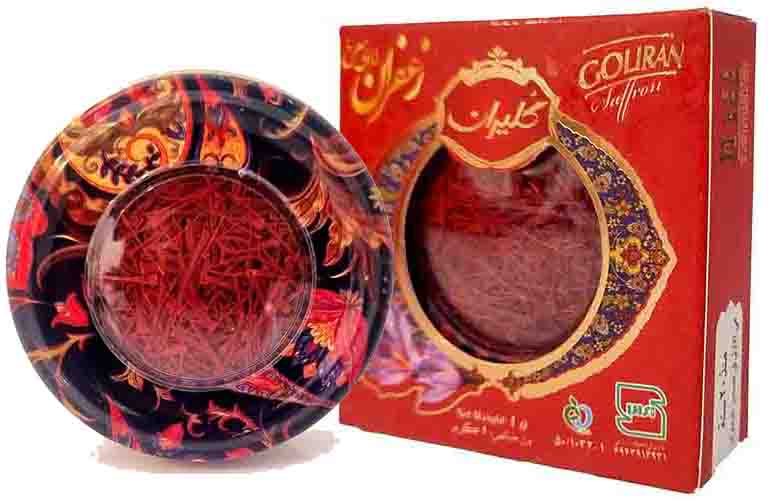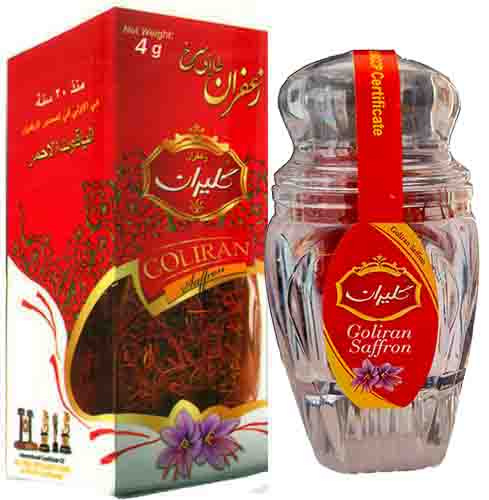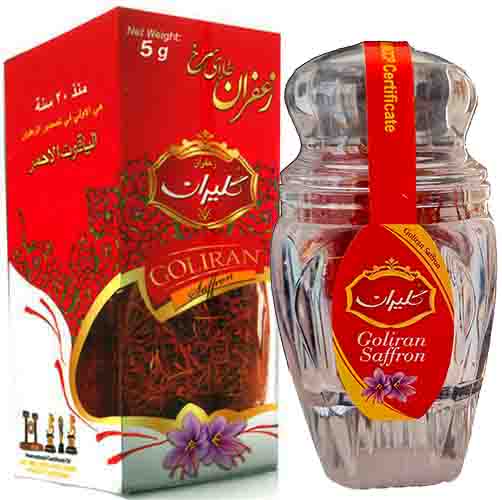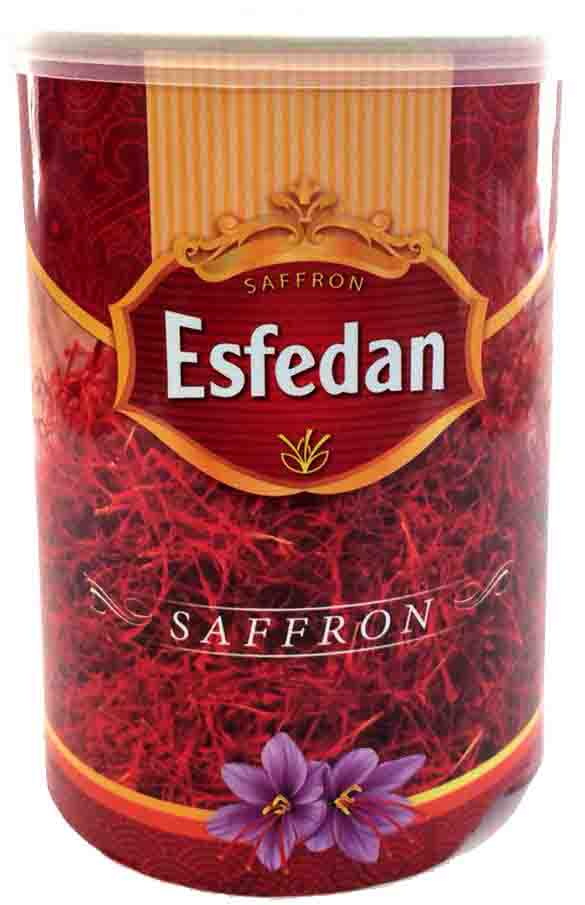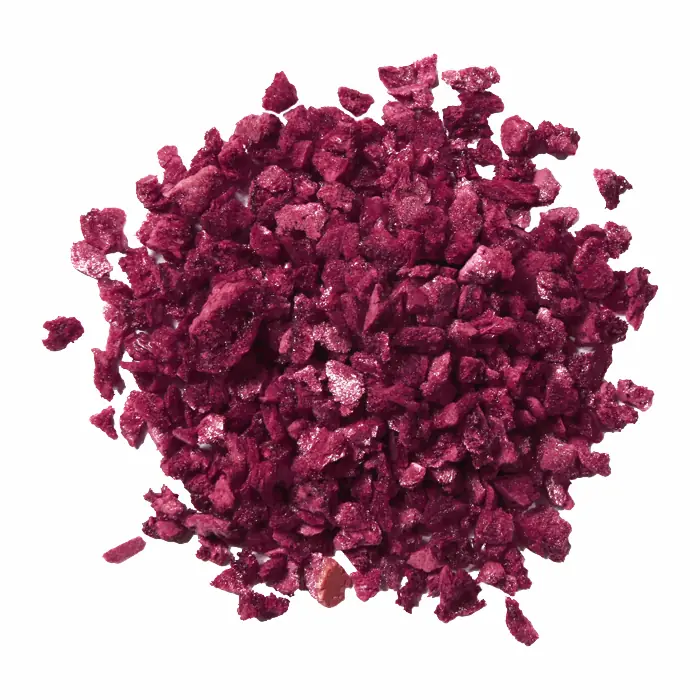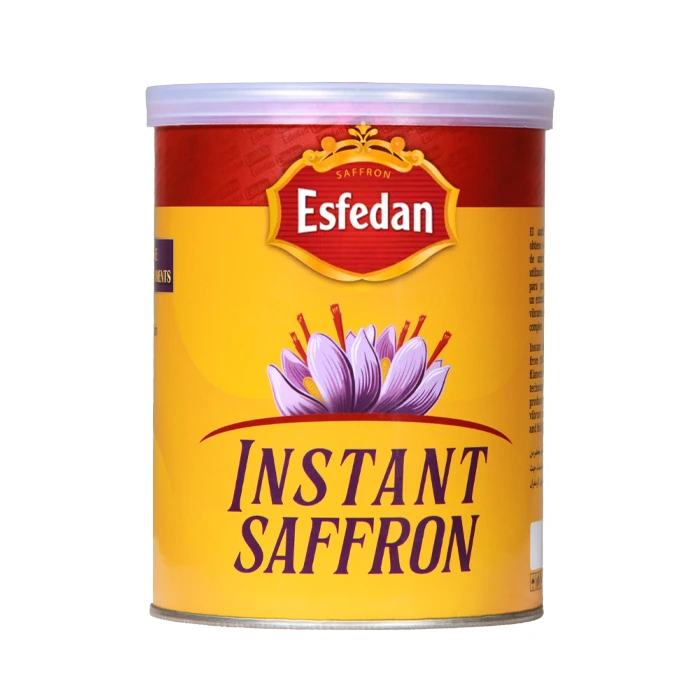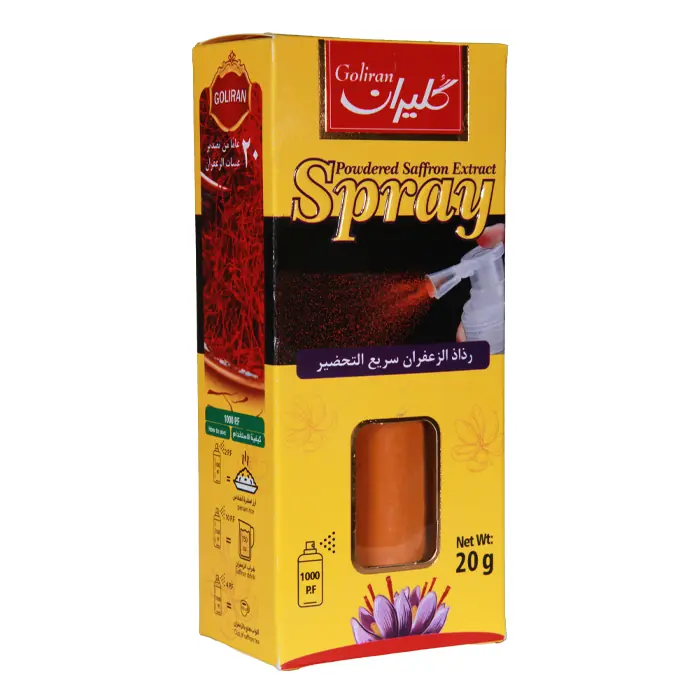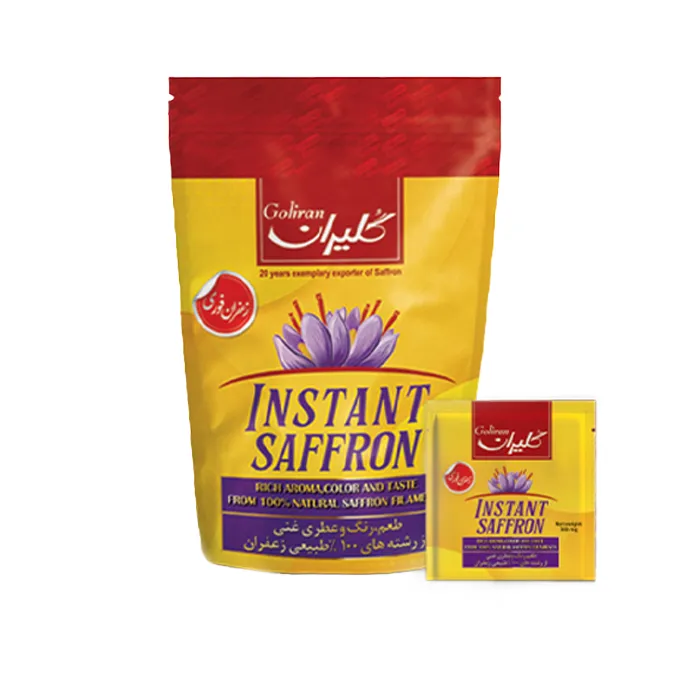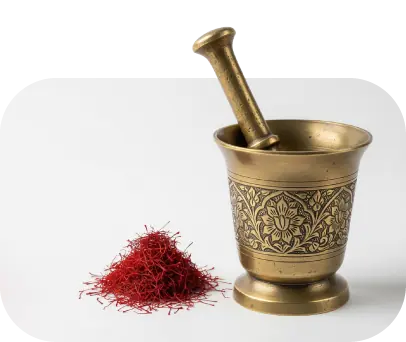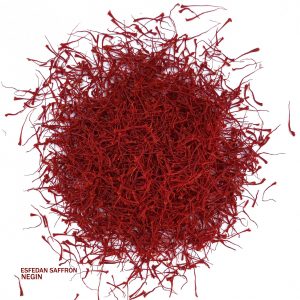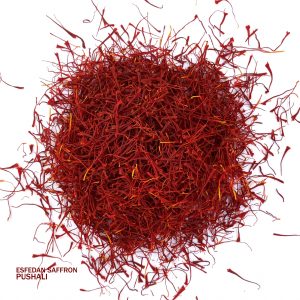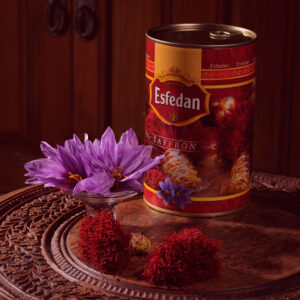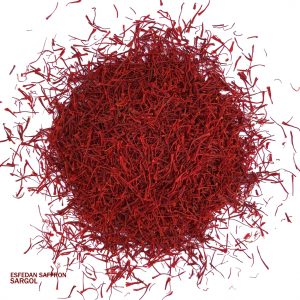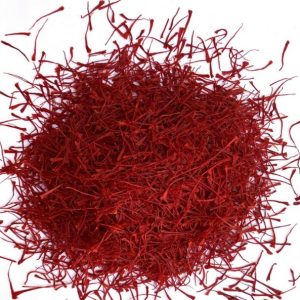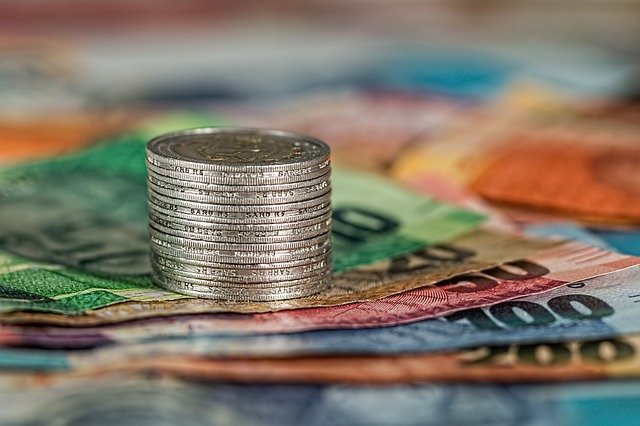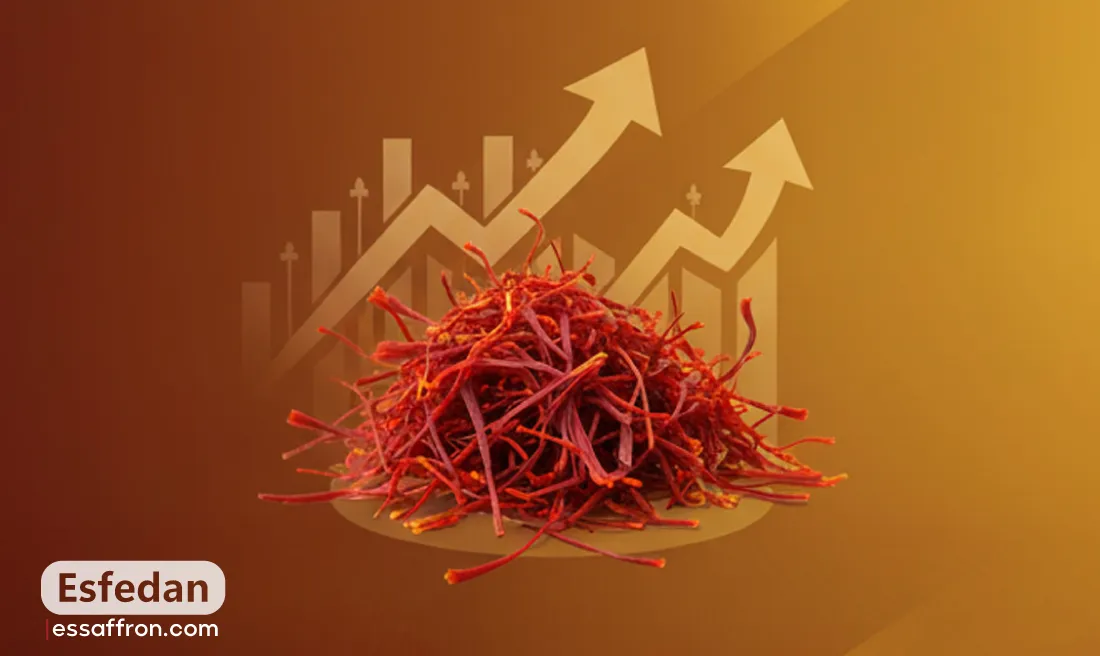Saffron, often referred to as ‘food gold’, is known for its strong fragrance and is used in various cuisines, cosmetics, foods, and medicine globally. Iran and Spain, the leading saffron exporters, produce the most renowned saffron types worldwide. While both varieties are available, they have unique characteristics that can affect their use and effectiveness. This blog offers a technical comparison of Iranian Saffron VS Spanish Saffron, providing scientifically-backed information on each. It aims to help understand how the cultivation process, region, quality, color, characteristics, usage, and price of Iranian and Spanish saffron differ. This comprehensive guide will assist in making informed decisions when choosing saffron for cooking, health benefits, or business investments.
The Appearance of Saffron
In case you were wondering about Iranian saffron vs Spanish saffron, both have a distinct physical appearance. Iranian saffron is entirely red, while the Spanish saffron consists of both red and yellow threads. The yellow threads of Spanish saffron result from mass drying, which may cause certain saffron parts to toast more than others.
The Iranian saffron, which is all red and dark in color, is an indication of its high crocin level. Crocin is a natural coloring agent found in saffron, and the Spanish saffron is rather brighter compared to Iranian saffron.
Another difference between Iranian and Spanish saffron is in the appearance of saffron threads. The Spanish saffron has a curly and short thread. On the other hand, the Iranian saffron has long, thick, and flat threads. In general, there are several types of both Iranian saffron and Spanish saffron, which we will discuss below.
Spanish saffron vs Persian saffron
Short answer: If you want bold color and flavor for dishes like tahchin or biryani, choose Persian saffron (ideally Super Negin/Negin). If you prefer a refined profile for paella or risotto with guaranteed origin, pick Spanish saffron with the La Mancha PDO seal. In all cases, check ISO 3632 results to avoid adulteration and get the potency you pay for.
| Factor | Persian (Iranian) | Spanish (La Mancha PDO) | Best Use | Buyer Tip |
|---|---|---|---|---|
| Processing | Traditional drying with controlled heat/airflow; no deliberate toasting. | Gentle post-harvest toasting (often charcoal/wood) for a subtle toasted nuance. | Persian → bold color/impact dishes. Spanish → delicate, balanced plates. | If you want a guaranteed origin, look for the PDO seal on Spanish; for Persian, verify the supplier and grading. |
| Flavor Profile | Bold, honeyed sweetness; earthy-floral; strong overall impression. | Refined, balanced, slightly toasty; cleaner finish. | Persian → tahchin, biryani, tagine. Spanish → paella, risotto, seafood. | Match intensity to your dish: choose Persian for assertive flavors, Spanish for subtlety. |
| Standards & Provenance | Typically tested under ISO 3632, grades like Super Negin, Negin, and Sargol. | PDO La Mancha controls origin/handling; also ISO 3632 tested. | Need verified origin? Spanish PDO. Need maximum punch? High-grade Persian. | Check ISO 3632 metrics (Crocin/Color strength) and ask for recent test results. |
| Price & Availability | Generally stronger value due to scale of production and availability. | Often pricier due to PDO controls and labor; smaller output. | Value-focused purchases → Persian. Provenance-focused gifts/menus → Spanish PDO. | Compare price per gram against verified quality (ISO/PDO), not just packaging. |
| Example Dishes | Tahchin, Biryani, Moroccan Tagine. | Paella Valenciana, Seafood Risotto, Fish stews. | Use Persian when you want deep color and bold aroma; Spanish when you want finesse. | Steep threads properly (warm water/stock) to extract color and aroma gradually. |
Tip: For quick decisions — Bold & colorful dishes → choose Persian. Subtle & balanced dishes (esp. Spanish/seafood) → choose Spanish PDO.
Iranian (Persian) Saffron: The Ancient Heartbeat of Quality
Among all saffron-producing countries, Iran stands out by supplying about 90–95% of the world’s saffron, making it the undisputed global leader in this precious spice. This dominance is rooted in centuries of expertise, the favorable climate of Khorasan, and deeply embedded cultural traditions. As a result, Persian saffron has become not only a symbol of heritage but also a cornerstone of Iranian cuisine.
Cultivation Advantages of Iranian Saffron
The arid, semi-desert climate of northeastern Iran, especially in Khorasan, creates ideal growing conditions for Crocus sativus. The unique soil composition, intense sunlight, and sharp temperature variations between day and night all contribute to saffron’s exceptional quality. Generations of Iranian farmers have mastered the delicate, labor-intensive methods of cultivation and harvesting. This dedication ensures consistent quality and optimal yields across expansive saffron fields.
Processing Methods in Persian Saffron
Drying is a critical step in preserving saffron’s potency. Traditional methods include natural sun-drying in shaded, ventilated areas or low-temperature oven drying. Both approaches focus on reducing moisture while safeguarding volatile compounds, color intensity, and aroma.
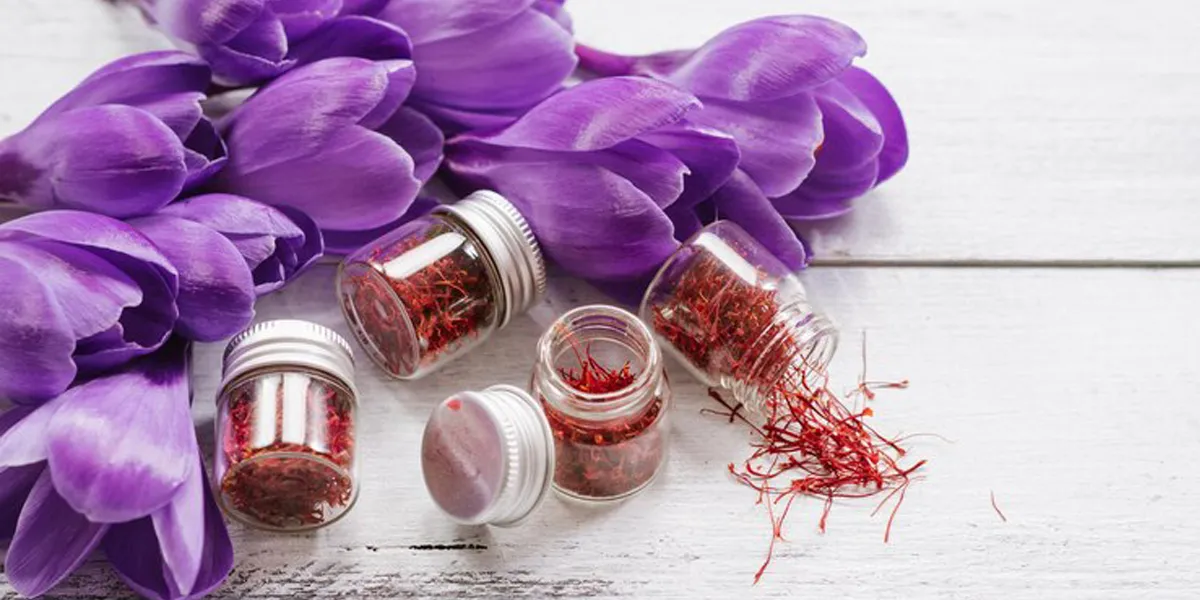
Iranian saffron is carefully sorted into distinct commercial grades based on stigma purity, thread integrity, and absence of style. Types of Iranian Saffron include:
-
Super Negin – The highest grade saffron, featuring long, thick, unbroken red stigmas. Rich in crocin, picrocrocin, and safranal, it delivers maximum color, taste, and aroma.
Checking specifications and buy saffron Super Negin
-
Negin – Similar to Super Negin but with slightly shorter or broken threads. Still considered a premium, all-red grade.
Checking specifications and buy saffron negin
-
Sargol – Shorter, often broken stigmas. Despite breakage, its purity (no yellow parts) ensures strong coloring and flavoring power.
Checking specifications and buy Sargol saffron
-
Pushal – Red stigmas with small portions of yellow/orange style attached. More affordable but less potent than all-red grades.
Checking specifications and buy Pushal saffron
-
Dasteh (Bunch) – Entire stigmas and styles tied together—the least processed form, offering lower potency due to the absence of red parts.
Checking specifications and buy Bunch Saffron
- Instant Saffron_ Esfedan Instant Saffron is a pioneering way to use pure saffron no steeping or grinding required. It delivers the vivid color, natural aroma, and true flavor of premium Iranian saffron in seconds. Enjoy the pure taste and delightful fragrance of saffron in meals, drinks, and desserts with unmatched convenience. This convenience, paired with uncompromising quality, makes Instant Saffron a top choice for both professional chefs and home cooks.
Checking specifications and buy Instant Saffron
This grading system guarantees purity and potency across various market needs—from luxury culinary use to more accessible options.
Why Chefs and Connoisseurs Often Prefer Persian Saffron
Premium Iranian saffron grades like Super Negin and Negin consistently achieve high ISO 3632 ratings for crocin, picrocrocin, and safranal. This means even small amounts deliver significant culinary impact, making Persian saffron both powerful and cost-effective. Persian saffron is recognized for its robust, earthy, bittersweet flavor, often enhanced by honey-like undertones and subtle metallic or musky notes. Its strength and complexity make Persian saffron ideal for dishes where saffron must shine:
-
Traditional Persian rice (e.g., Tahchin)
-
Rich Indian biryani
-
Flavorful Moroccan tagines
Spanish Saffron: The La Mancha Standard
While Iran dominates global production, Spain is world-renowned for its premium saffron, particularly from the La Mancha region. This saffron carries the prestigious Protected Designation of Origin (D.O.P. Azafrán de La Mancha), which guarantees authenticity and preserves traditional methods.
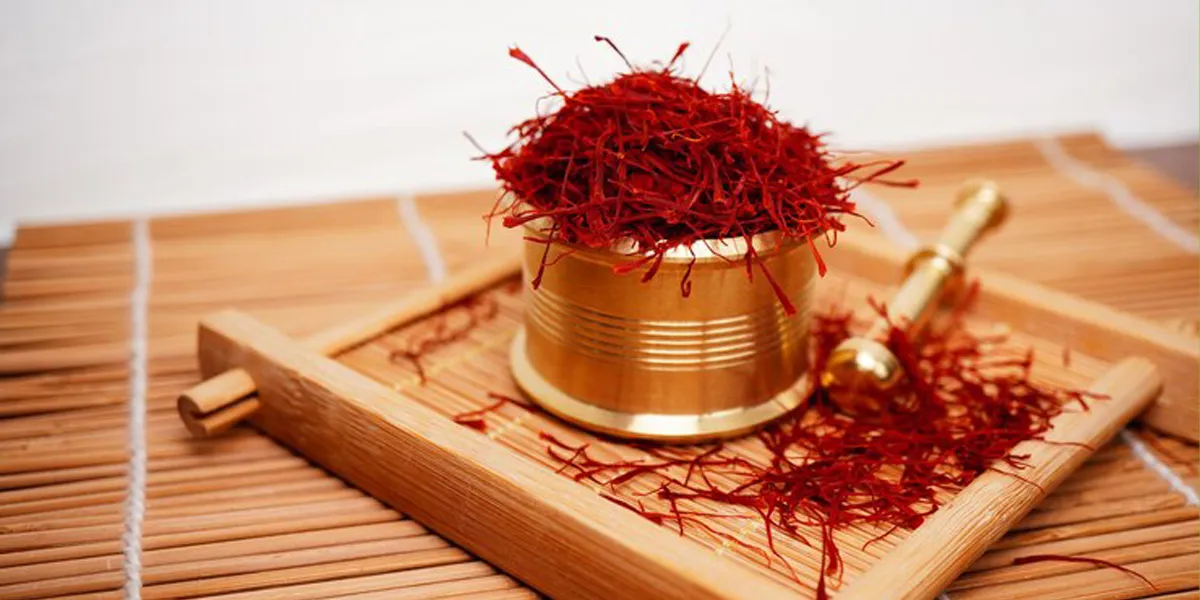
Regional Variations and the Mark of Terroir
The D.O.P. Azafrán de La Mancha certification provides:
- Origin: Saffron must be exclusively grown, harvested, and processed within designated areas of La Mancha, Spain. This geographical restriction guarantees authenticity.
- Traditional Methods: Strict adherence to centuries-old cultivation, harvesting, and drying techniques, monitored by regulatory bodies, maintains consistent quality and regional character.
- Quality Control: Stringent regulations throughout the production chain ensure purity, authenticity, and consistent sensory attributes, thereby preventing saffron adulteration.
Unique Processing of Spanish Saffron
-
Drying: Immediately after harvesting, stigmas are gently toasted over low heat—often using charcoal or wood fires. This imparts a subtle toasted aroma and slightly sweeter notes, setting Spanish saffron apart.
-
Appearance: Threads are usually shorter and thicker than top-grade Iranian varieties, with a vibrant scarlet-red color. Like its Iranian counterpart, D.O.P. La Mancha saffron consists of pure red stigmas, with yellow styles carefully removed.
A Distinctive Flavor Identity
Thanks to its terroir-driven cultivation and certified processing standards, Spanish saffron delivers a consistent, nuanced flavor profile that is unmistakably different from other saffron types, balanced, aromatic, and refined.
read more: Is Growing Saffron Profitable?
Iranian Saffron VS Spanish Saffron: Comparative Analysis
The choice between Iranian Saffron and Spanish Saffron depends on specific application requirements. This comparative analysis details their primary distinctions based on objective criteria.
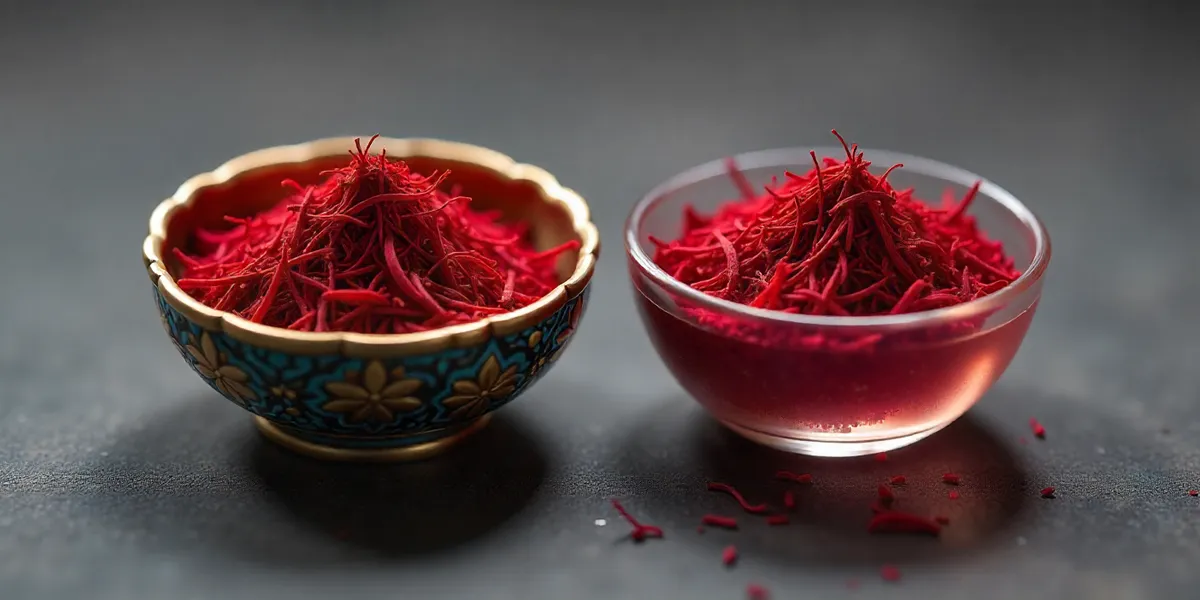
1. Appearance: Threads of Distinction
Visual characteristics offer initial differentiation:
Iranian Saffron: Threads are typically longer, more slender, and exhibit a darker, more intense crimson-red hue. Premium Iranian grades (e.g., Super Negin) are pure all-red stigmas, reflecting meticulous separation.
Spanish Saffron: Threads are generally shorter and thicker, with a vibrant scarlet-red color. D.O.P. La Mancha saffron also consists of pure red stigmas, with any yellow style carefully removed.
2. Aroma and Flavor Profile: A Sensory Journey
Sensory attributes are critical for culinary applications:
Iranian Saffron: Delivers a potent, intense, and complex aroma, often described as floral, earthy, with strong honeyed and notably bittersweet undertones. Its flavor is robust and assertive.
Spanish Saffron: Presents a more subtle, delicate aroma with a distinct honeyed sweetness and gentle earthiness, often featuring a faint toasted or woody nuance from its specific drying process. Its flavor is nuanced and harmonious.
3. Potency, Purity, and ISO Classification: Standardized Testing & Certifications
Saffron quality and potency are objectively measured by the international ISO 3632 standard, which quantifies crocin (color), picrocrocin (flavor), and safranal (aroma).
Iranian Saffron: Many premium Persian saffron grades, especially Super Negin and Negin, frequently achieve exceptionally high ISO 3632 ratings, particularly for crocin concentration. This indicates superior coloring power and high overall potency in Spanish saffron vs Iranian saffron comparisons.
Spanish Saffron: D.O.P. La Mancha Spanish saffron consistently meets stringent ISO 3632 Category I standards. While its top ISO color ratings might sometimes be marginally lower than the absolute highest Iranian grades, its reliability, guaranteed purity, and adherence to certified regional standards ensure a consistently high-quality product.
These certifications and traceability systems are essential for consumer confidence, ensuring authenticity and preventing saffron adulteration.
4. Beyond the Blossom: Cultivation, Harvesting, and Sustainability
Both regions primarily utilize traditional, hand-harvesting methods due to the delicate nature of the Crocus sativus.
Iranian Saffron: Given the large production scale, traditional methods are widespread. Efforts are increasing to modernize supply chains and implement sustainable farming practices, often addressing water efficiency in arid regions.
Spanish Saffron: The D.O.P. system enforces regional agricultural practices that often integrate sustainable farming methods, preserving local ecosystems and traditional knowledge. `Differences in organic certification are typically more verifiable for Spanish saffron due to established EU regulations.
5. Culinary Uses & Applications
The main difference between Iranian and Spanish saffron lies in their culinary applications and flavor intensity. Iranian saffron is prized for its strong aroma, deep color, and bold taste, making it ideal for dishes where saffron must stand out as a dominant element—such as Persian rice (e.g., Zereshk Polo), Indian biryani, Moroccan tagine, or rich sauces and desserts. In contrast, Spanish saffron offers a more subtle, harmonious flavor with light toasted notes, best suited for dishes where balance is key—like Spanish paella, Mediterranean risottos, delicate seafood, or creamy desserts such as crema catalana. While both benefit from gentle rehydration in warm liquid to release their full potential, chefs choose between them based on whether a dish calls for saffron’s bold presence or a refined, integrated accent.
6. Saffron Quality & Potency:
Because of its high market value, saffron is often subject to adulteration. Whether you are purchasing Spanish saffron or Iranian saffron, ensuring authenticity is crucial for both culinary results and health benefits.
7. Saffron Adulteration in Iran and Spain
Iran: As the producer of about 90–95% of the world’s saffron, Iran also faces the highest risk of saffron adulteration. Some dishonest sellers mix saffron with artificial dyes, plant fibers, or cheaper powders such as turmeric and paprika to reduce costs and increase volume. In domestic and export markets, lower grades (like Pushal or Dasteh) are sometimes mislabeled and sold as premium saffron. For this reason, buyers in Iran must pay close attention to the source of purchase, certified packaging, and laboratory test reports to ensure authenticity.
Spain: Although Spain produces much smaller volumes compared to Iran, its saffron—especially D.O.P. Azafrán de La Mancha—is subject to strict regulatory oversight. This significantly reduces the risk of adulteration within Spain itself. However, the main issue arises in international markets: some exporters sell Iranian or even fake saffron under the “Spanish saffron” label to take advantage of Spain’s premium reputation. Authentic Spanish saffron can be verified by the D.O.P. seal and certification marks on the packaging.
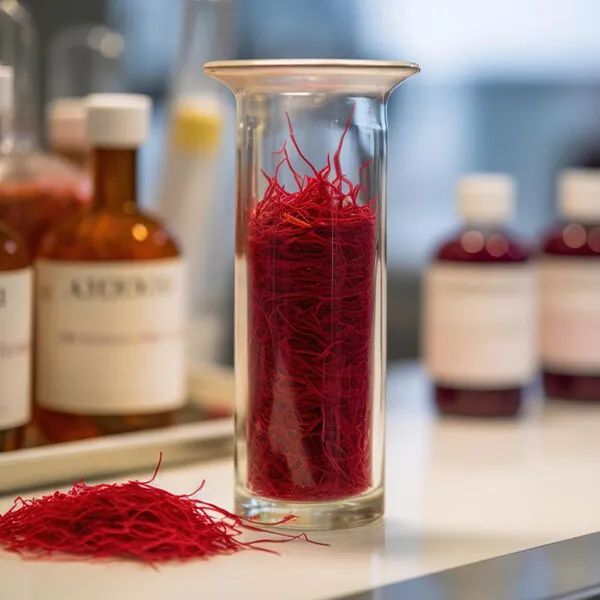
While Iranian saffron is more vulnerable to direct adulteration (mixing with foreign substances or artificial coloring), Spanish saffron is mainly threatened by mislabeling and counterfeit branding in global trade. In both cases, the best protection for consumers is to purchase from trusted vendors and look for clear indicators of authenticity, such as aroma, thread structure, and official certifications.
8. Saffron Health Benefits
Both Persian saffron and Spanish saffron contain the same primary active compounds—crocin, picrocrocin, and safranal—which drive saffron’s health benefits. Higher-grade saffron (such as Iranian Super Negin or D.O.P. La Mancha) usually contains greater concentrations, meaning stronger pharmacological effects. The differences in health benefits across saffron types relate more to ISO potency levels than geographical origin.
Documented health benefits include:
-
Mood Enhancement: Shown to reduce anxiety and mild-to-moderate depression.
-
Antioxidant Properties: Rich in crocins, crocetins, safranal, and kaempferol that protect cells from oxidative stress.
-
Cognitive Function: Supports memory and learning; studied for neuroprotection.
-
PMS Relief: Clinical trials confirm saffron can reduce PMS-related discomfort.
-
Ocular Health: May help delay age-related macular degeneration (AMD).
9. Saffron Storage & Preservation
To maintain aroma, color, and potency of both Iranian saffron and Spanish saffron, storage is key:
-
Airtight Containers: Use opaque glass jars or sealed tins.
-
Cool, Dark Place: Avoid sunlight, heat, and strong-smelling spices.
-
Avoid Refrigeration: Unless in very humid climates, as condensation can ruin saffron.
Properly stored saffron keeps its quality for up to two years, though potency declines gradually.
10. Saffron Pricing:
Saffron is one of the most expensive spices in the world because of its rarity, hand-harvesting, and global demand. However, the price difference between Iranian and Spanish saffron depends on several key factors:
-
Production Volume
Iran produces about 90–95% of the world’s saffron, which gives it economies of scale. This means Iranian saffron is usually cheaper per gram, especially in bulk exports. Still, premium grades like Super Negin remain high-priced due to their exceptional potency. -
Quality Certification
Spanish saffron, particularly D.O.P. La Mancha, is produced in smaller quantities and under strict certification standards. This traceability and guaranteed authenticity drive prices higher than most Iranian saffron, even if the volume is smaller. -
Labor Costs
Harvesting is manual in both countries, but labor costs in Spain are significantly higher than in Iran. This is another reason why Spanish saffron is often more expensive on the international market. -
Market Dynamics & Branding
Iranian saffron is sometimes sold under foreign labels to bypass trade restrictions, which can affect pricing and brand perception. Spanish saffron benefits from a strong reputation in European markets, allowing it to command a luxury price point.
Read more: Guide to Purchasing Saffron
Iranian saffron is generally more affordable and offers strong potency, making it ideal for buyers who want maximum value for everyday or large-scale culinary use.
Spanish saffron is positioned as a premium, certified product with a unique flavor profile and strong branding, making it especially appealing for gourmet cooking and export markets.
Conclusion: Key Insights on Saffron Variants
-
Iranian Saffron – Known for its high potency, deep coloring power, and bold flavor, it’s the best choice when saffron should be the star of the dish. Ideal for Persian rice, biryanis, tagines, and recipes that need intensity. Because Iran produces in large volumes, it also offers better value for everyday use, especially in bulk purchases.
-
Spanish Saffron – Valued for its certified quality (D.O.P. La Mancha), balanced flavor, and subtle toasted aroma, it’s perfect when saffron should complement rather than dominate a dish. Its premium branding and strict certification make it a reliable choice for chefs who want guaranteed authenticity and consistency.
How to Choose Practically
-
If you want strong color, bold taste, and cost-effectiveness, go for Iranian saffron (ideally Super Negin or Negin).
-
If you want nuanced flavor, guaranteed certification, and luxury positioning, choose Spanish saffron (D.O.P. La Mancha).
-
In all cases, check for ISO ratings, certifications, and trusted suppliers to ensure authenticity and avoid adulteration.
Bottom line: Iranian saffron gives you power and value, while Spanish saffron gives you certification and refinement. Your best choice depends on your cooking style, budget, and quality expectations.
Frequently Asked Questions (FAQs)
Is Spanish saffron the same as saffron?
Yes. Spanish saffron is a regional type of saffron cultivated in Spain. All saffron comes from the Crocus sativus flower.
Which is the highest grade saffron?
Both Iranian and Spanish saffron can achieve ISO Category I ratings. Iranian Super Negin is renowned for crocin intensity, while Spanish D.O.P. La Mancha guarantees consistency and purity.
What is the difference between Spanish saffron and Iranian saffron for everyday cooking?
-
Iranian saffron: Bold, intense, ideal for rice dishes, biryani, tagines.
-
Spanish saffron: Subtle, toasted sweetness, perfect for paella, risottos, and light dishes.
Can you eat saffron raw?
Yes, but steeping threads in warm liquid enhances flavor and aroma.
Can saffron be used beyond cooking?
Yes—saffron is used as a natural dye, fragrance ingredient, herbal remedy, and cosmetic antioxidant.


